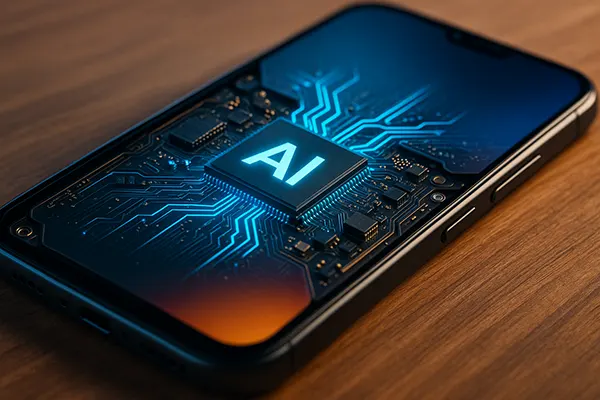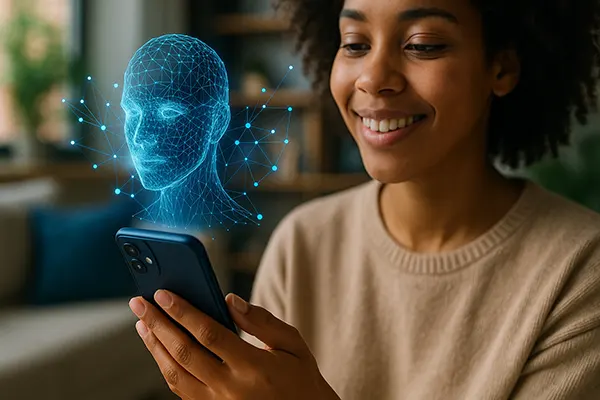AI-Powered Smartphones: How Co-Processors Are Shaping User Experience in 2025

In 2025, smartphones have undergone a radical transformation. At the heart of this shift lies the integration of artificial intelligence through dedicated co-processors, which enhance not just performance but redefine user expectations. These AI components no longer serve as passive tools; they actively shape the interaction between humans and machines, making smartphones more intuitive, adaptive and context-aware.
Evolution of On-Device AI and Co-Processors
The concept of embedding AI capabilities directly into smartphones began as a niche innovation, but by 2025 it has become a standard. AI co-processors—specialised chips designed to handle machine learning tasks—are now common in devices from leading manufacturers like Apple, Samsung, Google, and Xiaomi. These chips offload processing tasks from the main CPU, optimising energy consumption and allowing faster data interpretation.
Flagship smartphones now come with dedicated neural processing units (NPUs) or tensor cores capable of executing billions of operations per second. This empowers devices to perform tasks like real-time language translation, predictive text, and scene recognition without needing constant cloud connectivity. As privacy concerns grow, the shift to on-device processing becomes not only a technological but an ethical imperative.
The competition among chip manufacturers such as Qualcomm, MediaTek, and Huawei’s HiSilicon is fuelling rapid improvements. Each generation brings better training efficiency, higher throughput, and the ability to run increasingly complex models without compromising battery life. This leap ensures that AI is not a gimmick but a core component of daily mobile use.
Smartphone Intelligence Beyond Voice Assistants
AI co-processors have expanded the capabilities of smartphones well beyond voice assistants like Siri or Google Assistant. Today’s AI-infused phones understand context, habits, and preferences in real time. For example, they automatically adjust camera settings based on lighting, detect objects or documents with precision, and even offer tailored health and fitness recommendations using biometric sensors.
Another critical advancement is in communication. AI now filters spam calls, enhances audio clarity during calls using background noise analysis, and even predicts and prevents message delivery errors through grammar correction and tone suggestions. These developments are particularly beneficial in multilingual environments where miscommunication is frequent.
Moreover, smartphones now use AI to manage internal processes like memory allocation and background app activity. This results in smoother performance, less overheating, and reduced power consumption. As AI becomes more embedded in operating systems, users experience fewer technical interruptions and more seamless daily use.
AI for Photography, Personalisation, and Privacy
Photography has seen one of the most significant leaps thanks to AI co-processors. From pixel binning to multi-frame processing and semantic segmentation, AI handles sophisticated photography tasks in milliseconds. The result is professional-grade images from a handheld device, even in low-light or high-contrast scenarios.
AI also personalises smartphone interfaces. It learns when and how users engage with apps, reorders home screen icons, adjusts notification priorities, and recommends content based on contextual data. This behaviour-level adaptation makes smartphones truly feel like extensions of the individual rather than generic tools.
Privacy remains a focal point. With co-processors enabling on-device inference, sensitive data no longer needs to be transmitted to cloud servers. For instance, facial recognition and fingerprint matching are now done locally, reducing the risk of interception. AI also now detects and blocks suspicious background activities or malware in real-time without human intervention.
Impact on Daily Tasks and Accessibility
AI co-processors bring meaningful improvements to accessibility features. Voice dictation, gesture recognition, and real-time transcription have become significantly more accurate and responsive, enabling users with disabilities to interact with smartphones more naturally.
Daily tasks like booking appointments, navigating unfamiliar environments, or organising schedules are now managed proactively. The AI detects patterns in user behaviour and offers timely suggestions—such as opening a transit app before leaving home or reminding a user to bring an umbrella based on weather forecasts and calendar entries.
For educational and professional use, AI-enhanced smartphones provide automated summarisation of documents, advanced voice search, and instant content translation. These features not only increase productivity but also bridge knowledge gaps in real-time, making smartphones essential tools for both students and professionals.

Challenges and the Road Ahead for AI Smartphones
Despite the clear advantages, challenges persist. AI models require constant updates to stay relevant, and training on-device models can still be limited by thermal and power constraints. Moreover, balancing performance with ethical AI development—ensuring fairness, non-bias, and transparency—remains a significant hurdle for manufacturers and developers alike.
Standardisation is also a key issue. With each manufacturer using its own AI frameworks and processors, the fragmentation can limit third-party developer support. Efforts are now underway, particularly through Android’s Neural Networks API and Apple’s Core ML, to create more consistent environments for AI app development across devices.
Looking forward, the next stage of innovation lies in on-device federated learning, allowing smartphones to improve AI models collaboratively without sharing personal data. This will enable even smarter AI that evolves with user habits, while still safeguarding privacy and minimising reliance on centralised servers.
Shaping the Future with Human-Centric AI
Ultimately, the goal of AI in smartphones is not just automation but augmentation. In 2025, AI co-processors enable devices to think ahead, adapt in real-time, and interact in a more human way. This human-centric approach is set to define the next era of mobile computing.
Smartphones are becoming context-aware companions. They can anticipate needs, offer support before being asked, and understand the user’s state and surroundings. Such capabilities not only improve convenience but also enhance safety, productivity, and well-being.
As AI continues to mature, ethical and sustainable deployment will be paramount. Smartphones equipped with intelligent co-processors are poised not just to react—but to responsibly lead the user experience of tomorrow, one decision at a time.



